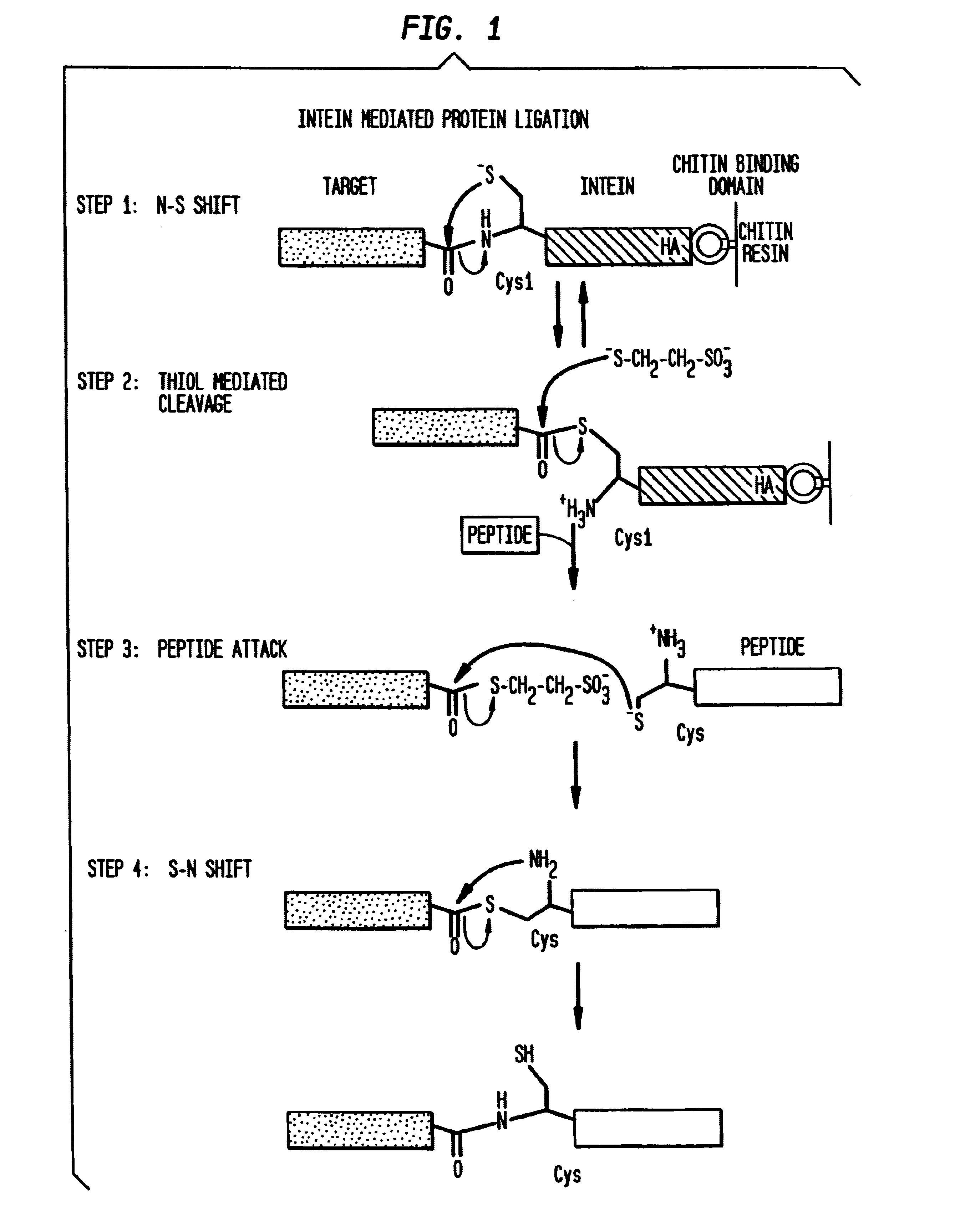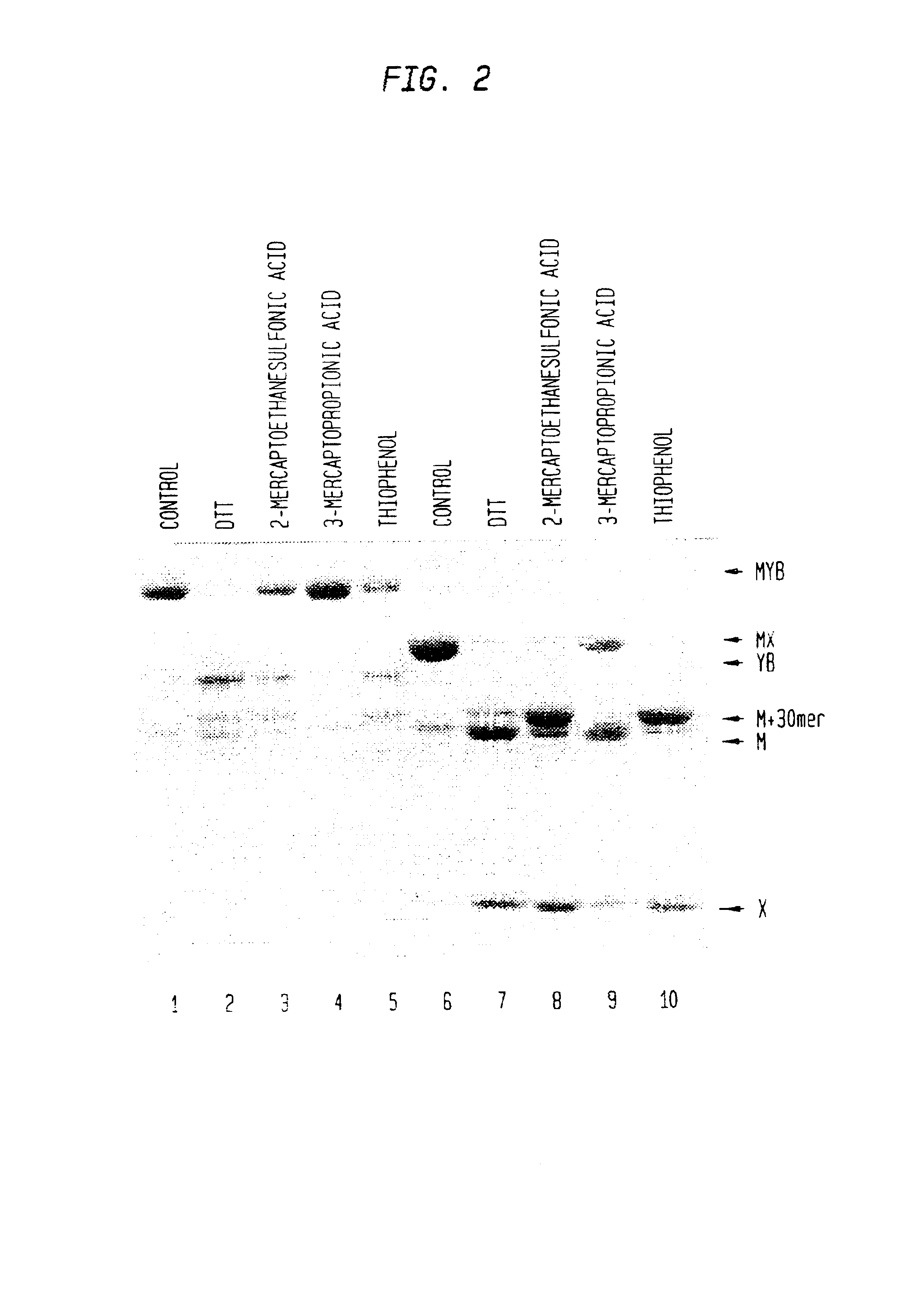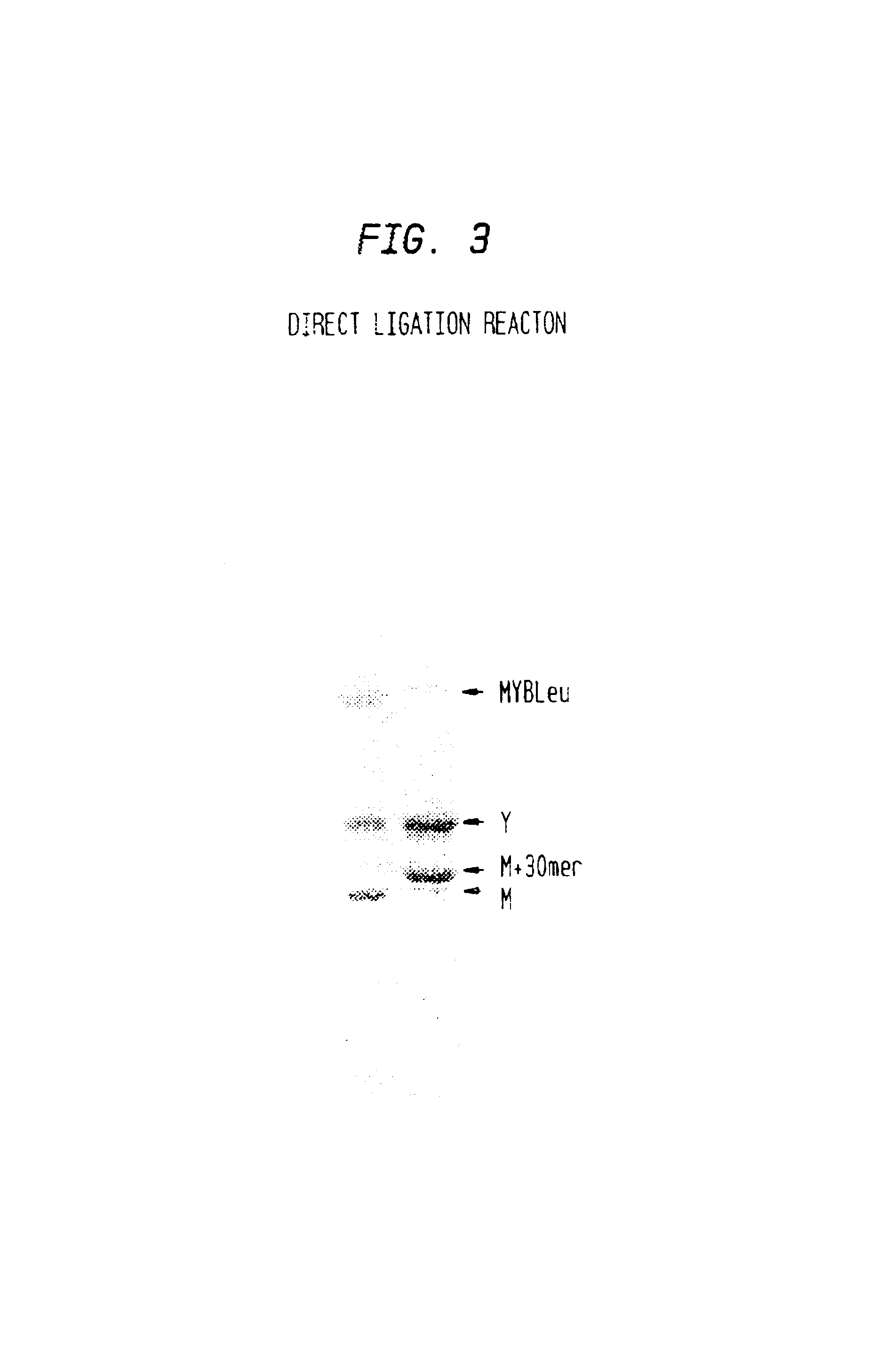Intein mediated peptide ligation
a peptide ligation and intein technology, applied in the field of proteins, can solve the problems of low yield, difficult to obtain cytotoxic proteins, limited procedures, etc., and achieve the effect of restoring the activity of the native cytotoxic protein, reducing the number of cytotoxic proteins, and improving thiol-induced cleavag
- Summary
- Abstract
- Description
- Claims
- Application Information
AI Technical Summary
Benefits of technology
Problems solved by technology
Method used
Image
Examples
example i
Creation of Vectors pTXB1 and pTXB2 for Ligation
[0028]Asparagine 198 of the Mxe GyrA intein (Telenti, et al., (1997) J Bacteriol. 179:6378-6382) was mutated to alanine by linker insertion into the Xmnl and Pstl sites of pmxeMIPTyrXmnSPdel to create pMXP1. The Xmnl site was originally introduced into the unmodified Mxe GyrA intein sequence by silent mutagenesis. The Pstl site was a unique site in the plasmid. The linker was composed of mxe#3 (5′-GGTTCGTCAGCCACGCTACTGGCCTCACCGGTTGATAGCTGCA-3′) (SEQ ID NO:1) and mxe#4 (5′-GCTATCAACCGGTGAGGCCAGTAGCGTGGCTGACGAACC-3′) (SEQ ID NO:2).
[0029]Into pMXP1 another linker composed of mxe#1 (5′-TCGAATCTAGACATATGGCCATGGGTGGCGGCCGCCTCGAGGGCTCTTCCTGCATCACGGGAGATGCA-3′) (SEQ ID NO:3) and mxe#2 (5′-CTAGTGCATCTCCCGTGATGCAGGAAGAGCCCTCGAGGCGHGCCGCCACCCATGGCCATATGTCTAGAT-3′) (SEQ ID NO:4) was inserted into the Xhol and Spel sites to introduce a multiple cloning site (Xbal-Ndel-Ncol-Notl-Xhol-Sapl) before the Mxe GyrA intein (pMXP2).
[0030]The 0.6 kilobase No...
example ii
Labeling a Target Protein: Maltose Binding Protein
[0042]Maltose binding protein (MBP, 42 kDa) was isolated as described in Example I above using the IMPACT procedure (IMPACT manual from New England Biolabs, Inc., Beverly, Mass.) in the presence of MESNA.
[0043]A biotinylated peptide possessing an N-terminal cysteine (CDPEK*DS-COOH (SEQ ID NO:9)), in which the biotin was attached to the ε-amino group of the lysine residue) was ligated to the freshly purified target protein as described above. Briefly, 4 μL of biotinylated peptide (10 mM) were mixed with a 36 μL aliquot of the freshly purified MBP sample. The mixture was incubated at 4° C. overnight.
[0044]Western blots with alkaline phosphatase linked anti-biotin antibody detected the presence of the ligated product but not the unligated target protein (FIG. 7). The efficiency of the ligation is typically greater than 90% when MESNA is used for cleavage.
example iii
Labeling a Target Protein: Bst DNA Polymerase I Large Fragment (Bst Pol 1)
[0045]Bst DNA Polymerase I large fragment (67 kDa) was isolated as described in Example I above using the IMPACT procedure (IMPACT manual from New England Biolabs, Inc., Beverly, Mass.) in the presence of MESNA.
[0046]A biotinylated peptide possessing an N-terminal cysteine (CDPEK*DS-COOH (SEQ ID NO:9)), in which the biotin was attached to the L-amino group of the lysine residue) was ligated to the freshly purified target protein as described. Briefly, 4 μL of biotinylated peptide (10 mM) were mixed with a 36 μL aliquot of the freshly purified Bst Pol 1 sample. The mixture was incubated at 4° C. overnight.
[0047]Western blots with alkaline phosphatase linked anti-biotin antibody detected the presence of the ligated product but not the unligated target protein (FIG. 7). The efficiency of the ligation is typically greater than 90% when MESNA is used for cleavage
PUM
| Property | Measurement | Unit |
|---|---|---|
| Biological properties | aaaaa | aaaaa |
| Fluorescence | aaaaa | aaaaa |
| Cytotoxicity | aaaaa | aaaaa |
Abstract
Description
Claims
Application Information
 Login to View More
Login to View More - R&D
- Intellectual Property
- Life Sciences
- Materials
- Tech Scout
- Unparalleled Data Quality
- Higher Quality Content
- 60% Fewer Hallucinations
Browse by: Latest US Patents, China's latest patents, Technical Efficacy Thesaurus, Application Domain, Technology Topic, Popular Technical Reports.
© 2025 PatSnap. All rights reserved.Legal|Privacy policy|Modern Slavery Act Transparency Statement|Sitemap|About US| Contact US: help@patsnap.com



